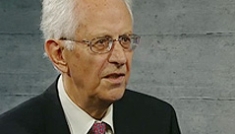Privacy Policy We are very delighted that you have shown interest in our enterprise. Data protection is of a particularly high priority for the management of the Ellusion Ltd.. The use of the Internet pages of the Ellusion Ltd. is possible without any indication of personal data; however, if a data subject wants to use …
Read More »Articles by George Dorgan
Latest SNB Intervention Update: Weekly Sight Deposits
July 20, 2015Weekly update on SNB interventions: Sight deposits are debt for the central bank. An increase of sight deposits implies more debt and SNB interventions
Read More »Swiss National Bank: Lost More than Half of Owners’ Equity
July 15, 2015The latest data show that the Swiss National Bank (SNB) has lost over half its owners’ equity compared to December 2014. It is now less than 40 billion CHF, as compared to 86 billion in December 2014. We show the history for balance sheet and owners’ equity.
Read More »What Drives Government Bond Yields?
July 13, 2015For us the five major drivers of government bond yields are:
Inflation expectations and inflation: The by far most important criterion. High inflation expectations must be compensated via higher bond yields. The main driver behind inflation expectations is the wage development, this is the form of inflation that typically persists. Price inflation follows inflation expectations with a certain lag.
Wealth: The higher the wealth of a country, the lower the bond yields. Wealth is typically increased by high savings.
Regular and irregular influences on bond yields by central banks: Regular: Central banks buy government bonds, in particular in US Dollars, the world reserve currency. Irregular: Central banks buy bonds of their own government and depress yields – the "quantitative easing".
If a country has relatively low wealth then foreigners must help with the purchase of bonds and the following factors become relevant:
Foreign debt relative to GDP: Foreign bond holders want higher yields against risks (e.g. currency risks) of holding foreign assets.
The net international investment position (5a) and change in this position, namely the current account balance (5b).
Swiss National Bank: Composition of Reserves and Investment Strategy
July 13, 2015We regularly publish the SNB asset structure by currency, rating & duration. They shall be a template for the tactical asset allocation along these dimensions for other conservative asset managers – CHF holdings certainly excluded because the SNB nearly exclusively buys foreign assets.
Read More »The Euro Glut: The Summer 2015 Update
June 28, 2015Deutsche Bank’s George Saravelos was one of the first to use the term "euro glut". He anticipated a massive capital outflow from Europe that countered the huge European current account surplus. The Euro glut also led to the end of the EUR/CHF peg. Reasons are missing investment opportunities in Europe despite the high savings rate.
Read More »The Holy Grail of Long-Term Currency Movements: Crowther’s Balances and Imbalances of Payments
June 28, 2015The former chief editor of "The Economist" Geoffrey Crowther published a great work on the development of balance of payments and current accounts over the long-term. It divides development into six phases, which are analogous to Shakespeare’s seven phases of life.
The seven stages are:
Young debtor nation, Mature debtor nation, Debt repayment nation, Young creditor nation, Mature creditor nation, Credit disposition /Asset Liquidation nation and the back to start stage
SNB interventions June 2015
June 23, 2015Latest update for June 2015: The pace of SNB intervention is slowing. Sight deposits, the indicator for SNB interventions, rise by 0.5 billion francs per week.
April and May: Sight deposits rise by 1.5 billion CHF per week. Thanks to this intervention the SNB is able to maintain the EUR/CHF around 1.0450.
Development of European Bond Yields
June 20, 2015Swiss Real GDP Rises by 15% … in Euro Terms
June 18, 2015George Dorgan shows that Gross Domestic Product (GDP) is a measurement in the local currency. Effectively, Swiss real GDP rose by 15% in Euro terms, but fell slightly in CHF. He also emphasizes that Switzerland needs a big rebalancing of its economy, away from exports towards consumption. The Swiss National Bank was right to remove the euro peg. The move towards consumption is only possible when the Swiss franc is stronger because consumers will profit on it.
Read More »The two phases of CHF appreciation
June 15, 2015We show the two phases or "two innings" of Swiss franc appreciation: The risk aversion game and the inflation game.
With the weakening of emerging markets and the strengthening of the United States in 2013/2014, the Swiss National Bank (SNB) had won the first battle in the war against financial market, the "risk aversion game", the first inning in two-part match. Risk aversion is lower because the United States recovered with weaker oil prices.
The "inflation game" started earlier than we expected, at least in the eyes of the Swiss National Bank, namely in January 2015. They anticipate higher inflation that will come with rising wages in the United States and Germany.
The History of the Swiss Franc
June 8, 2015Swiss Franc History: The Gold Standard and Bretton Woods
June 8, 2015In this post we will show the history of the Swiss Franc until 1971, a monetary era driven by the gold standard and the Bretton Woods period, both periods with nearly fixed exchange rates.
Read More »Eurocrisis, Myth and Reality, part 1: Big Job Creation in Spain
June 2, 2015In the new series George Dorgan suggests that the euro crisis is a temporary development but not a long-lasting crisis. In the first part he shows that Spain actually created a lot of jobs in last twenty five years.
Read More »Purchasing Power Parity, REER: Is CHF Overvalued? (May 2015 update)
May 15, 2015After the strong revaluation of the Swiss franc in recent years, some economists, like the ones at the Swiss National Bank (SNB), claim that the franc is overvalued. Many use misleading Purchasing Power Parity (PPP) measures like the Big Mac index, the OECD index or the PPP based on consumer prices for computing fair values. The second big mistake is to use the wrong base year and to assume, for example, that in 1999 the CHF was correctly valued. The third mistake is to ignore massive Swiss current account surpluses helped by immigration of highly qualified personnel and the subsequent reduction of unit labor costs. This last factor also implies that an evaluation of the balance of payments should take precedence against the partially misleading REER and PPP evaluations.
Read More »The Euro is Poised for a Rise, Expect $1.50 in 2 to 4 Years
May 8, 2015We present twelve reasons that could sustain a further euro appreciation to $1.40 or even 1.50 in the upcoming two to four years. The main one is that Germans are net global creditors and Americans net debtors. This is reflected in fiscal and monetary policy and in investors’ behaviour. The post was written in December 2013, but the arguments are still valid today and will continue to be valid in the future.
Read More »Carry Trade: Is the Swiss Capital Account Able to Neutralise the Persistent Current Account Surpluses?
May 5, 2015Rising Sight Deposits at SNB Means Rising SNB Debt
May 4, 2015Money creation and sight deposits may have two points of view:
1. The central bank creates money – i.e. the SNB decides to increase sight deposits when it does currency interventions
2. Commercial banks create money – inflows in CHF on Swiss bank accounts make those banks increase their "sight deposits at the SNB. If inflows in CHF are higher than outflows then CHF must rise, unless the central bank does currency interventions.
We will present both alternatives.
SNB’s IMF data
April 27, 2015This IMF data on the SNB website shows SNB Forex and gold reserves in the last month. It is so-called "IMF Special Data Dissemination Standard (SNB Data)"
Read More »SNB
April 21, 2015FX Theory: The Trade Surplus and the Real Exchange Rate Mean Reversion
April 6, 2015George Dorgan explains why currencies of countries with trade surpluses must appreciate over the long-term. Thanks to these surpluses, inflation and costs of companies rise more slowly than in other countries. In Forex a mean reversion does not exist, but only an inflation-adjusted reversion to the mean: a real exchange rate mean reversion or in short the "real mean reversion."
Read More »Where does SNB intervene against overvalued CHF, do they sell EUR & USD? (April Update)
April 3, 2015In his first response to the Swiss financial tsunami on January 15, George Dorgan suggested that the EUR/CHF of 1.10 will not be reached any time soon. He explains where the SNB should intervene and if they sell Euros and dollars.
Read More »


